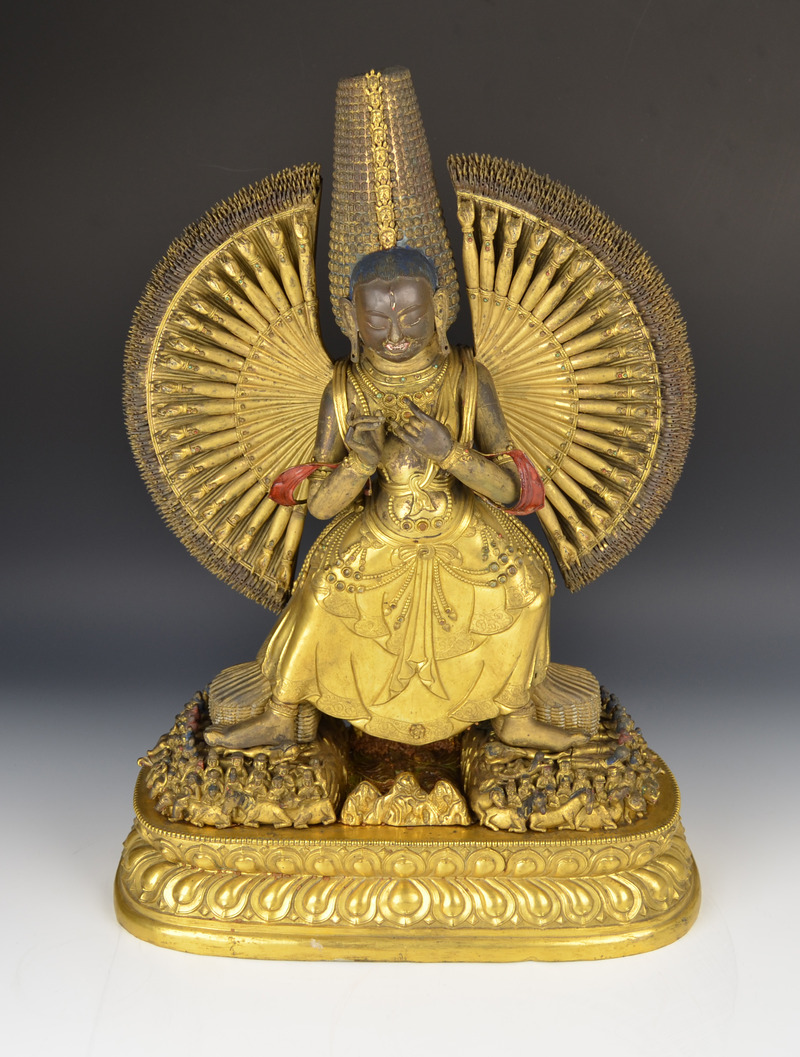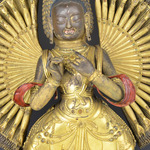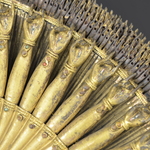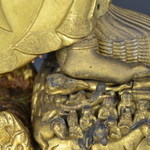| Object Number | A1438A |
| Current Location | Collections Storage |
| Culture | Tibetan | Buddhist |
| Provenience | Tibet |
| Date Made | 17th - 18th century |
| Section | Asian |
| Materials | Gilt |
| Iconography | Dogar | Sitatapatra |
| Description | This gilded bronze statuette of the goddess Sitatapatra is a powerful image combining both considerable detail with a simple, geometric vision of forms. The goddess is shown having a thousand heads, arms, and legs, and stands on a base decorated with double rows of lotus petals. Schematically represented, the multiplication of her heads is embodied in a cone-like headdress; while her thousand arms form a halo around her body. She wears a long garment with an elaborate jeweled belt, which was originally set with semi-precious stones. Her hands in front are frozen in a ritualized gesture (mudra). She stands astride three mountains, her many feet crushing down upon vast legions of people and animals.This sculpture, like many Tibetan images, embodies an esoteric doctrine in the organization of its formal elements that was perceived and understood only by the initiated believer. Inside the image were both a columnar staff (A1438A) and a prayer scroll (A1438C). Such deposits are not uncommon and were intended to endow the image with divine power. |
| Credit Line | Purchased from George Lagai, Kny-Sheerer & Company, 1913 |
| Other Number | Getz 141 - Other Number | #6 - Other Number |
Report problems and issues to digitalmedia@pennmuseum.org.






